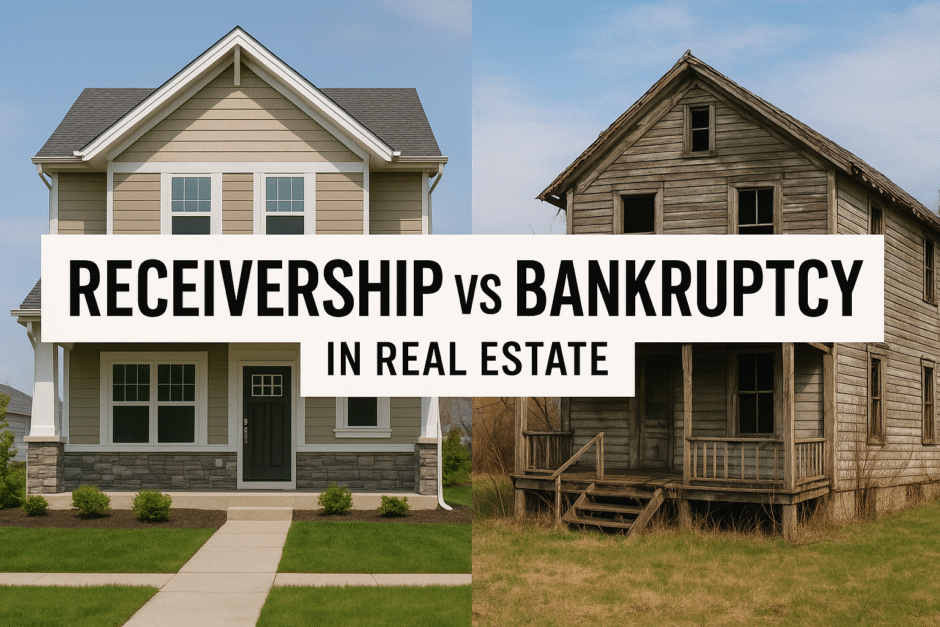Receivership VS Bankruptcy In Real Estate
Mostly, the property or business owner in real estate does not have enough financial assets for property preservation. Under such circumstances, he has no solution but to choose between receivership or bankruptcy. But are they similar procedures? No, these are different legal solutions the court allows under certain conditions. But learning the differences between receivership vs bankruptcy in real estate is effective for new real estate professionals. It ensures their property’s safety.
Financial Distress Solutions: Receivership VS Bankruptcy In Real Estate
You must consider the following differences between receivership vs bankruptcy in real estate.
Explaining What Is Receivership
It’s a legal solution where the court appoints a third neutral party to take possession of the property or business. This third-party person is known as the receiver.
- This legal solution is used especially when there’s a default on a loan or severe mishandling. The property is at risk.
- The state law governs this procedure.
- It is mostly conducted by the lender in foreclosure cases.
- The receiver is responsible for managing, maintaining, leasing, selling, etc, of the property.
- Receivership does not discharge debts or offer an automatic stay against creditor actions.
- This procedure is used to stabilize operations and maintain the property’s worth.
Understanding What Is Bankruptcy
Bankruptcy is Chapter 11 or Chapter 7. It is a federal court process. This procedure allows debtors to reorganize or liquidate assets under the U.S. Bankruptcy Code.
- Chapter 11 bankruptcy is utilised in real estate companies and individuals with massive property portfolios for debt restructuring. It helps ensure the continuity of business operations while proposing a repayment plan.
- Chapter 7 bankruptcy is used for liquidation purposes. Assets are sold to repay creditors, and the business typically ceases operations.
When you file for bankruptcy, it automatically halts lawsuits, foreclosures, and other collection actions.
Specific Differences Between Receivership VS Bankruptcy
The following are the differences between receivership and bankruptcy worth knowing.
| Aspect | Receivership | Bankruptcy |
| Jurisdiction | State court. | Federal court. |
| Initiated by | Typically creditors/lenders. | Debtors (voluntary) or creditors. |
| Purpose | Asset preservation. | Debt discharge or reorganization. |
| Control | Receiver takes control. | Debtor often remains in control (Chapter 11). |
| Automatic Stay | Not automatic. | Immediate upon filing. |
| Duration | Often quicker. | Can be lengthy. |
| Cost | Less expensive. | Generally, more costly. |
Which Option Is Suitable In Real Estate?
Different considerations can help users understand which option is best for their financial distress protection.
- Lenders mostly prefer receivership because they want quick control over a distressed property. They don’t want to wait for the lengthy bankruptcy procedures. Business operations can remain intact while the assets are saved from deterioration.
- A detailed debt solution requirement leads to the selection of bankruptcy. It is especially beneficial while dealing with multiple creditors, and the need for debt restructuring and discharge is intensified.
Conclusion
To conclude, there are multiple differences between receivership vs bankruptcy in real estate. Although both solutions are effective for financial distress procedures. But choosing a specific option depends on your financial condition and the court’s approval. Financial and legal experts can help navigate to the best solution without any hassle.




